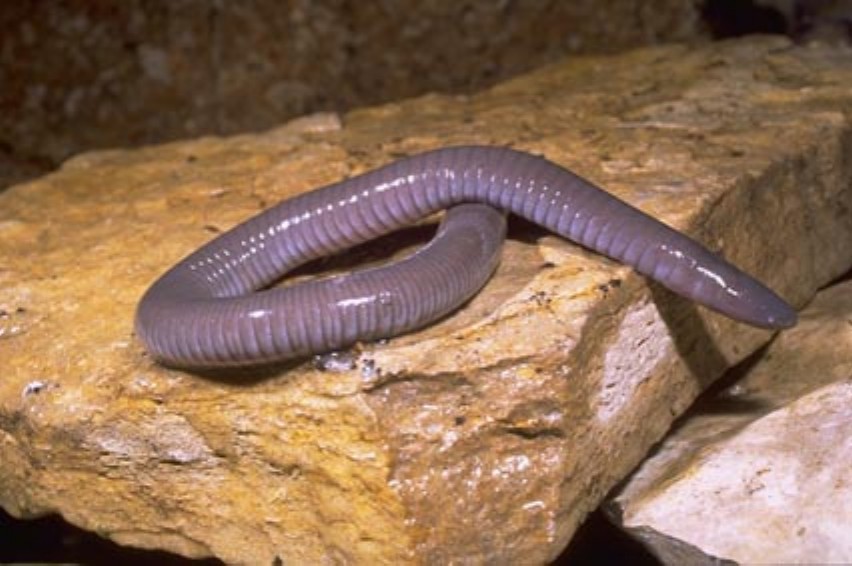Translations:Adventist Youth Honors Answer Book/Nature/Amphibians/13/en
Eastern newt (Notophthalmus viridescens)
Where found: common newt of eastern North America. They frequent small lakes, ponds, and streams or near-by wet forests. They can coexist in an aquatic environment with small, noncarnivorous fish, as their skin secretes a poisonous substance when the newt is threatened or injured. They have lifespans of 12 to 15 years in the wild, and may grow to five inches in length. These newts are common aquarium pets, being either collected from the wild or purchased. The bright orange juvenile stage, which is land-dwelling, is often known as the red eft. Some sources blend the general name of the species and the red-spotted newt subspecies name into eastern red-spotted newt (although there is no "western" one).
Caecilians (Gymnophiona)
Where found: Caecilians are found in wet tropical regions of Southeast Asia, India and Sri Lanka, parts of East and West Africa, the Seychelles islands in the Indian Ocean and in northern and eastern South America.
Description: Caecilians completely lack limbs, making the smaller species resemble worms, while the larger species with lengths up to 1.5 meters ![]() resemble snakes. The tail is short or absent. They have a strong skull, with a pointed snout used to force their way through soil or mud.[2] In most species, the number of bones in the skull are reduced and fused together, and the mouth is recessed under the head. Owing to their underground life, the eyes are small and covered by skin for protection, which has led to the misconception that they are blind. This is not strictly true, although their sight is limited to simple dark-light perception. All caecilians possess a pair of tentacles, located between their eyes and nostrils. These are probably used for a second olfactory capability, in addition to the normal sense of smell based in the nose.
resemble snakes. The tail is short or absent. They have a strong skull, with a pointed snout used to force their way through soil or mud.[2] In most species, the number of bones in the skull are reduced and fused together, and the mouth is recessed under the head. Owing to their underground life, the eyes are small and covered by skin for protection, which has led to the misconception that they are blind. This is not strictly true, although their sight is limited to simple dark-light perception. All caecilians possess a pair of tentacles, located between their eyes and nostrils. These are probably used for a second olfactory capability, in addition to the normal sense of smell based in the nose.


